When it comes to canine mealtime, there are two different scenarios possible. On the one hand, you’ll find dogs that settle down to enjoy their food in a leisurely manner. But on the other hand, you can’t get your fingers away fast enough. Those pups dive into their meals as if they’re starving. You hear frantic gulping (maybe a cough as kibble goes down the wrong tube), and you fear they’re going to choke. Those dogs? They’re the perfect candidate for dog slow feeders. Because they need training in SLOWING DOWN mealtime.
Speed Eating
At least once in your life, you’ve probably bolted down a meal. Maybe you needed to rush to a meeting. Or you could work in a field where mealtime consists of five minutes crammed in where you can find them. When you rush through eating, you don’t taste much. And how do you feel afterward?
Pretty terrible. Because the stomach doesn’t appreciate getting treated that way.
Dogs aren’t any different. They’re not trying to rush away to work, though. So why do they race through meals? It could be due to a variety of reasons:
- Bullying: When you have multiple dogs in a household, one may decide to eat EVERYONE’S food. And whoever doesn’t finish first loses their dinner.
- Competition: If they came from a large litter or a living situation where they needed to fight for food, that behavior’s engrained. Their brain tells them, “If you don’t eat everything as quick as possible, you’ll starve.”
- Malnutrition: Dogs that aren’t getting all of the nutrients they need feel like they’re starving. This drives them to cram as much food into their bellies as possible.
- Parasites: Intestinal parasites steal nutrition from your pup. And that leaves them frantically hungry.
Health Consequences
Obviously, you don’t want your favorite canine to feel miserable and driven to clean their bowl in record time. But there are serious health risks that come with that behavior. And those safety hazards are the biggest reason to look into dog slow feeders.
GDV
Dogs that gulp down their food increase their risk for bloat or gastric dilatation and volvulus (GDV). GDV results when a pup bolts a meal and then engages in a frantic burst of activity.
The stomach flips around in the abdominal cavity. This causes the valves AND blood vessels to close off. GDV is ALWAYS an emergency. It’s most common in deep-chested dogs, such as Dachshunds and Great Danes, but it can happen in ANY breed.
Vomiting
The stomach doesn’t handle abuse well. And without a dog slow feeder, your pup swallows unchewed chunks of food. Not to mention plenty of air. All of that dumps into the stomach at one time. And a lot of the time, the belly rebels.
This causes your dog to vomit the entire meal they just consumed. It makes them feel better (since the gulping process leaves them nauseous). However, now they’re hungry again. This can cause them to eat the vomit (I know, disgusting). And it means YOU get to deal with the mess, either way.
Gas
Wolfing down food at top speed means sucking in air. This normally happens in brachycephalic breeds, even if they DON’T eat fast. The smushed faces you see in Bulldogs and Pugs mean they can’t breathe and eat well at the same time. The GI tract doesn’t need air any more than the lungs need food. So that air needs to go SOMEWHERE.
Odds are, you’re going to hear a “delicate” canine belch or cope with doggie farts. And, unlike cats, you’re going to notice them.
Other Uses for Dog Slow Feeders
Dog slow feeders appeal to other owners, though. Health issues are important, of course, but sometimes you want to tackle other issues.
For instance, that bullying problem. You CAN set up barriers to keep the dominant pup away from everyone else. However, that may continue to create a chasm between everyone. But if you give a dog slow feeder to that dog, they’ll start eating as slow as everyone else. Suddenly, there’s no food to steal. Everyone gets to eat at the same time, in the same place. So you don’t have to worry about further behavior problems.
And dog slow feeders act as a kind of puzzle toy. They’re not the most difficult puzzle, though. But for some dogs, they’re enough. (Not every canine out there is a genius) You can offer stimulation without causing frustration. And your furry friend still gets rewarded in the process.
Choosing a Dog Slow Feeder
You’ll find dozens of varieties of dog slow feeders on the market. They come in every configuration and style you can think of. But you want to make sure you’re keeping your dog and their needs in mind when you pick one out. Not every slow feeder works for every dog. Think through these features as you make your selection:
- Your Dog’s Face: What kind of facial structure does your dog have? Do they have a long nose? A flat face? You want to slow their eating pace, not stop it completely. Look for dog slow feeders that will allow their face to reach the food.
- Material: You can find everything from ceramic to stainless steel to plastic. You want to stick to safe materials. That means skipping BPA, phthalate, or PVC products.
- Cleaning: Due to their design, dog slow feeders are trickier to clean than standard bowls. If you can find something dishwasher safe, you’ll do yourself a favor.
- Capacity: You still want to offer your dog their usual amount of food. So you need to make sure the slow feeder can hold their meal.
- Base: One of the first things dogs do is try to manipulate the dog slow feeder. You want to look for non-slip bases or the ability to place them in an elevated feeder.
- Puzzle Difficulty: You know your dog’s capability. Look for something that will prevent that gulping behavior without frustrating them so much they refuse to eat (or destroy the slow feeder).
Cautions with Dog Slow Feeders
As fantastic as dog slow feeders are, you need to keep a few precautions in mind, especially in the beginning. Your dog’s used to wolfing down their food. And as they encounter obstacles, that may cause problems.
For instance, if you choose a hard material, such as ceramic or steel, they CAN chip a tooth. But, at the other end of the spectrum, plastic can end up broken. And if your dog’s determined to reach their food, they may ingest the pieces of plastic. This may lead to a foreign body.
If the dog slow feeder isn’t anchored or heavy enough to remain in place, your clever canine may figure out how to flip it over. Then they’ll return to speed-eating off the floor. (Not to mention YOU get to cope with the mess)
And if you can’t put the slow feeder in the dishwasher, you may struggle to get it clean. You don’t want leftover pieces of food to remain and rot.
Alternatives to Dog Slow Feeders
Some dogs see a dog slow feeder and back away. They either can’t figure out how it works, or they want their old bowl. (Or they may figure out how to flip the feeder over, no matter what you try) You still want to curb that habit of gulping their food, though. If you want to try some alternatives, you can. However, they may not work as effectively.
- The Yard: Picking kibble out of the lawn WILL slow your dog down. You scatter it over the yard. Then your pup goes on a hunt. However, there ARE some problems with this idea:
- You can’t use canned food.
- Your dog may get some dirt with their meal.
- If your pup misses any kibble? You’re going to end up with pests invading the yard.
- Muffin Tins: The average muffin tin works nicely as a slow feeder. And you can use a standard or mini-size pan. Unhappily, they’re a cinch to flip over.
- The Tennis Ball: One of the earliest tricks to stop dogs from bolting their food was to add a tennis ball to the bowl. It causes pups to slow down as they eat around it. And it works well – unless your dog figures out how to remove the ball. (Or they attempt to eat the ball)
The Best Dog Slow Feeders
Having a dog that inhales their food is dangerous. The behavior can lead to health complications that may result in steep vet bills. And you don’t want your beloved pup thinking they may not get another meal (or all of their meal). Dog slow feeders don’t restrict the amount of food. But they DO calm down the feeding frenzy. And while they put more of a cleaning burden on you, they ease the stress you’re probably feeling.
Our Greyhound is a retired racer. She came from a kennel situation where she needed to compete for her meals. And she tries to swallow her bowl in one bite. A dog slow feeder is mandatory for her. (After all, she’s a deep-chested breed) And having one has worked. Instead of eating in two seconds, now she takes a few minutes. It gives us peace of mind.
Company for Animals allows you to do the lawn trick without stepping foot outside. The “grass blades” allow you to use dry or canned food in a phthalate-free plastic environment. Your dog hunts among them to find their meal. There are non-slip grips on the base, and the oval shape helps discourage clever dogs from tipping it over. For you, it’s dishwasher safe, helping save you from hours of scrubbing between the grass nooks and crannies.
Downsides? The grass blades are too high to work for dogs with short noses or flat faces. And if you have an exuberant pup, they may injure their eyes, rushing in to get their food. This is also a large dog slow feeder, measuring 16″ long and 11.5″ wide. (Even the mini is 9″ by 11″) So if you don’t offer enough food, your dog may spend HOURS trying to find their meal.
The Good
- Phthalate-free plastic
- Resembles lawn
- Non-slip grips and oval shape
- Dishwasher safe
- Available in 2 sizes
The Bad
- Not suitable for dogs with short noses or flat faces
- Dogs may injure eyes
- Large size
DuraPet uses a raised center in their dog slow feeder to create a feeding channel for your dog to follow. The stainless steel bowl is dishwasher safe, and it comes in three different sizes: 3, 4, and 8 cups. There’s a non-slip ring on the bottom to prevent your dog from sliding the bowl around the floor as they eat around the edge.
The downsides? While easy to keep clean, the wide channel doesn’t slow the average dog down when eating. And yet, the irony is the space is too deep for flat-faced dogs to reach the bottom of the bowl.
The Good
- Stainless steel
- Raised center
- Non-slip ring
- Dishwasher safe
- Available in 3 sizes
The Bad
- Not suitable for dogs with flat faces
- Channel too wide to slow eating
If you like the dog bowl set-up you currently have, you can use the Gobble Stopper as your dog slow feeder of choice. You use a suction cup to anchor it into the bowl, and the bone shape blocks your dog from sticking their entire head in and gulping down their meal. It comes in three different sizes to accommodate any bowl you have, and you won’t have to worry about sliding or flipping over. Even better, when your dog finishes dinner, you can pop it into the top rack of the dishwasher.
So what are the downsides? As the bone sticks up, plenty of dogs figure out how to grab hold of it and lift it free – suction cup or no suction cup. And when they can’t remove it, they often break it. If you have a ceramic dog bowl, it seems to hold in place better. But the prominent design prevents dogs with a flat face from reaching their meal.
The Good
- BPA-free plastic
- Projects out of bowl
- Dishwasher safe
- Available in 3 sizes
The Bad
- Not suitable for dogs with flat faces
- Dogs can remove from bowl
- Dogs may break it
Jasgood offers a dog slow feeder that uses projections to encourage your dog to take their time with meals. The BPA-free plastic uses rounded bumps that keep your dog safe while they excavate for their food. You have two size options and eleven colors to choose from. They all feature non-slip grips to help it stay in place. And no need to worry about cleaning – it’s dishwasher safe.
Downsides? Those non-slip grips aren’t the most reliable things in the world. Some people found them coming off, and others didn’t see them working in the first place. And as it’s a lightweight bowl in the first place, many dogs flipped the feeder over. You might have also guessed that the projections prevent dogs with shorter snouts and flat faces from using the slow feeder.
The Good
- BPA-free plastic
- Rounded projections
- Non-slip grips
- Dishwasher safe
- Available in 2 sizes
- Available in 11 colors
The Bad
- Not suitable for dogs with short noses or flat faces
- Non-slip grips unreliable
- Easy to flip over
Neater prides itself on unique dog slow feeders. Their Slow Feed Bowl is a handy stainless steel bowl that you can use on the floor or in most standard elevated feeders. It uses the raised center (embossed with a cute paw print) to create a circular channel for your dog to follow. You’ll find it in two sizes (1 or 4 cups). And it’s handily dishwasher safe.
The downsides? There’s no non-slip grip. Not a problem if you’re using it with an elevated feeder, but not great if you put it on the floor. And the channels are too narrow for flat-faced dogs (poor smushy faces can’t catch a break!).
The Good
- Stainless steel
- Raised center
- Dishwasher safe
- Fits standard elevated feeders
- Available in 2 sizes
The Bad
- Not suitable for dogs with flat faces
- No non-slip grip
Often, owners looking to stave off concerns for GDV also want elevated feeders. That’s where Neater’s Slow Feeder comes in. You still get a dog slow feeder, but it has legs to bring the egg crate-like surface closer to your dog’s reach. It’s also beneficial for seniors that may have arthritis developing in their necks. The kit allows you to choose from two different heights (5 or 7.5 inches), or it works equally well on the floor. It comes in two different sizes (2 cups and 6 cups), or you can buy one with an attached water bowl. And when you remove the slow feeder? The base works as its own water bowl. The legs have non-slip grips on them for added security. And the soft ABS plastic works for every doggie face – even brachycephalic breeds!
So what are the downsides? The legs are nice, but if your dog pushes hard enough on the slow feeder, they’ll come off. It’s also another big slow feeder, coming in at 10″ long and 15.5″ wide. Reasonably, that’s too big for small breeds.
The Good
- ABS plastic
- Egg crate design
- Dishwasher safe
- Non-slip grip
- Kit to elevate feeder
- Available in 2 sizes
- Available in 4 colors
The Bad
- Legs may come off
- Large size
If you feel your dog can handle a bit of a challenge with their dog slow feeder, consider Nina Ottosson’s. Your dog gets nine compartments with lids they need to remove to access their food. It’s BPA-free plastic that works for dogs with any shape of face. They can manipulate the pieces with their teeth or noses. And the non-slip base will hold the feeder still while they work.
Downsides? You’ll have to skip the dishwasher here. This dog slow feeder needs soapy water and a sponge to get clean. And if your dog is prone to chewing, they’ll quickly destroy the plastic pieces. ALWAYS supervise them whenever you set this puzzle out.
The Good
- BPA-plastic
- Puzzle
- Non-slip base
The Bad
- Must hand-wash
- Not good for chewers
Outward Hound is one of the top names in dog slow feeders. You’ll find seven different styles, all in BPA-free plastic. They come in four different sizes, too, making sure that every dog gets a chance to participate. They use non-slip bases to prevent sliding around, and the round shapes aren’t as easy to flip over. Raised designs encourage your dog to take their time while they eat. And since they’re dishwasher safe, you don’t have to fuss with clean-up.
The downsides? Some of the designs have deeper projections than others. This can lead to facial bruising if you have a dog that dives into their bowl. Other pups may struggle if you pick a pattern that’s too challenging for them. You’ll want to consider your dog’s personality carefully. And that goes for intelligence, too, as clever canines use the raised pieces to pick up and flip the bowls over.
The Good
- BPA-plastic
- Raised patterns
- Non-slip base
- Dishwasher safe
- Available in 4 sizes
- Available in 7 styles
The Bad
- Dogs may bruise face
- Some patterns too challenging
At first glance, you might not recognize Paw5 as a dog slow feeder. But it works similar to sprinkling kibble on the lawn. Food gets trapped in the rolls of fabric, encouraging your pup to sniff and search for every bite. The fibers are upcycled cotton and polyester, with a rubber base that provides a non-slip surface. And while you won’t want to head for the dishwasher, you CAN toss this in the washing machine without a second thought.
So what are the downsides? You want to skip trying to hide canned food in this feeder – unless you want to make a mess. And while the fabric is non-toxic, it isn’t difficult for your dog to grab hold of a roll, pick the mat up, and shake every piece of kibble free (if they’re large enough). Or, worse, they may decide to shred it.
The Good
- Upcycled cotton and polyester
- Fabric rolls
- Rubber base
- Machine washable
The Bad
- Not designed for canned food
- Easy for dogs to pick up
- Dogs may destroy
ProSelect adds a twist to the usual dog slow feeder. The stainless steel bowl comes with rounded columns you can detach when it’s time for cleaning. You have three sizes to choose from (1.5, 5, and 8 cups), each with the three columns your dog will need to eat around. The base has a non-slip ring to hold the bowl firmly in place. And the bowl’s safe for the dishwasher.
Downsides? Those removable columns CAN’T go in the dishwasher. You need to remove them and hand-wash them. And it’s easy for food particles to get trapped under the seam. You should probably make sure you’re washing the bowl after every use to prevent contamination from building up. Those projections are also too high for dogs with flat faces.
The Good
- Stainless steel
- Raised columns
- Non-slip base
- Dishwasher safe
- Available in 3 sizes
The Bad
- Not suitable for dogs with flat faces
- Columns must get hand-washed
- Food may get trapped under columns
Slow Lane
Watching your dog fly through a meal is concerning on plenty of levels. Will they choke? Do you need to fret over a possible GDV or bloat? Are you going to end up coping with doggie gas later? Settling all of that stress aside by turning to dog slow feeders is an easy solution. You can use the same food and amounts. All you’re doing is changing the bowl.
Your dog will have a safer mealtime. And you? You get after-dinner time without dog farts. (Who doesn’t want that?)

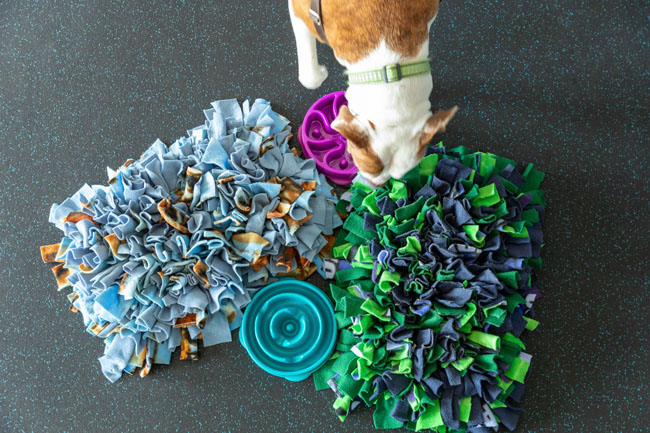
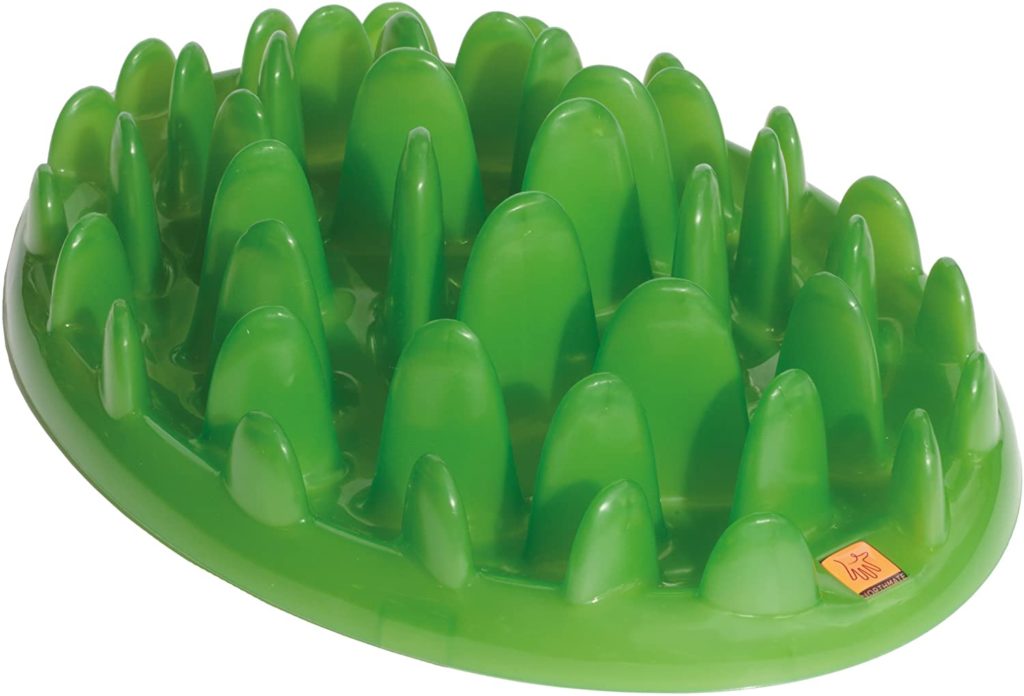
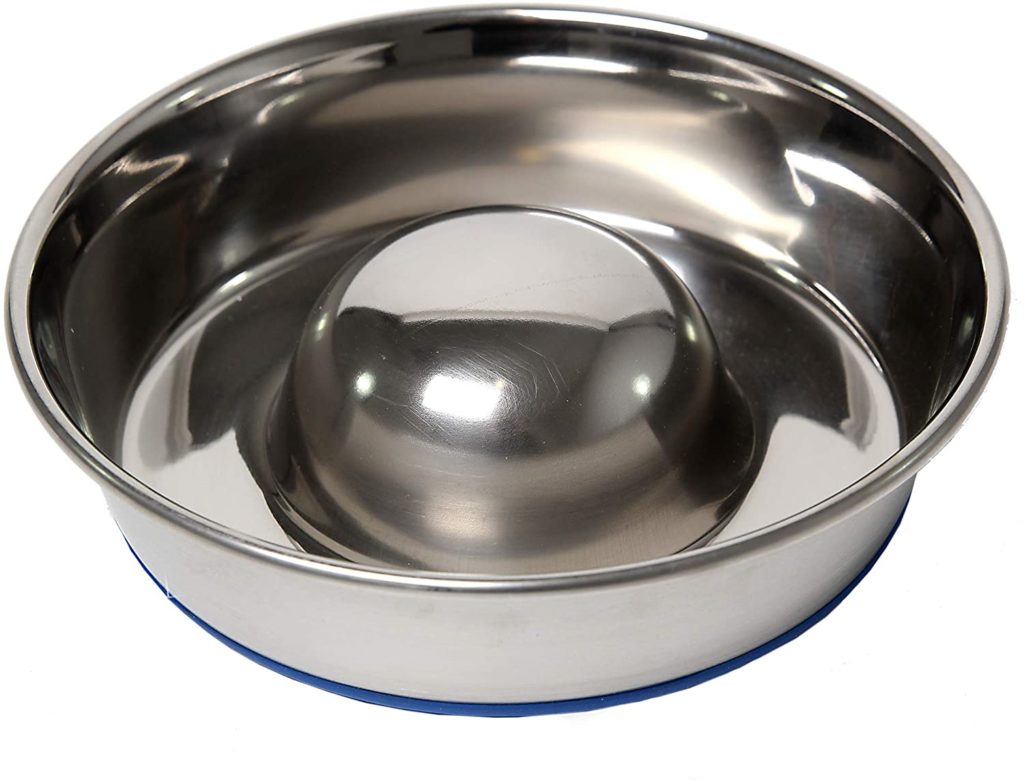
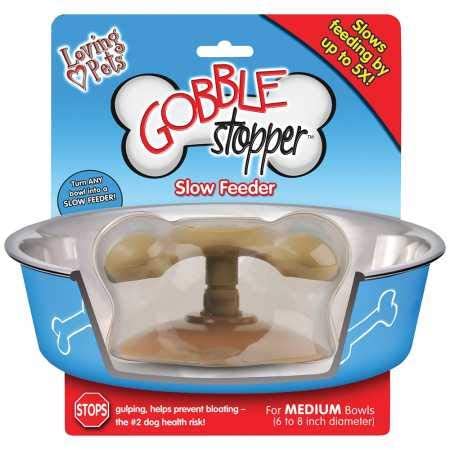
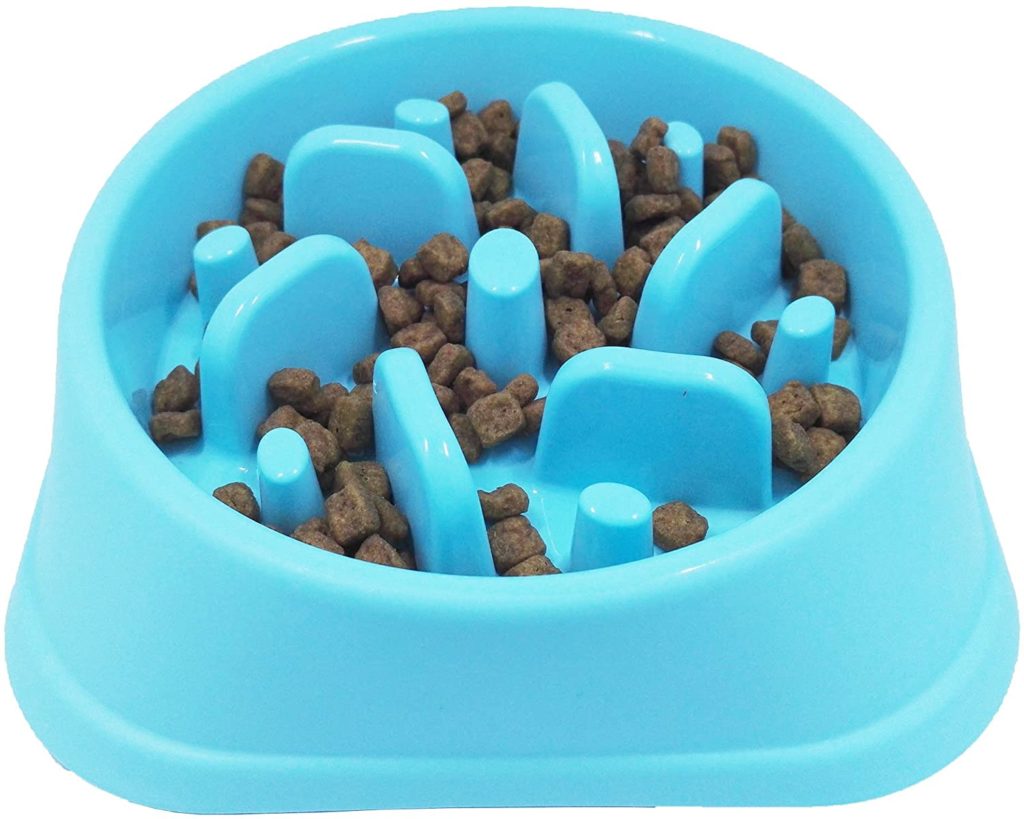
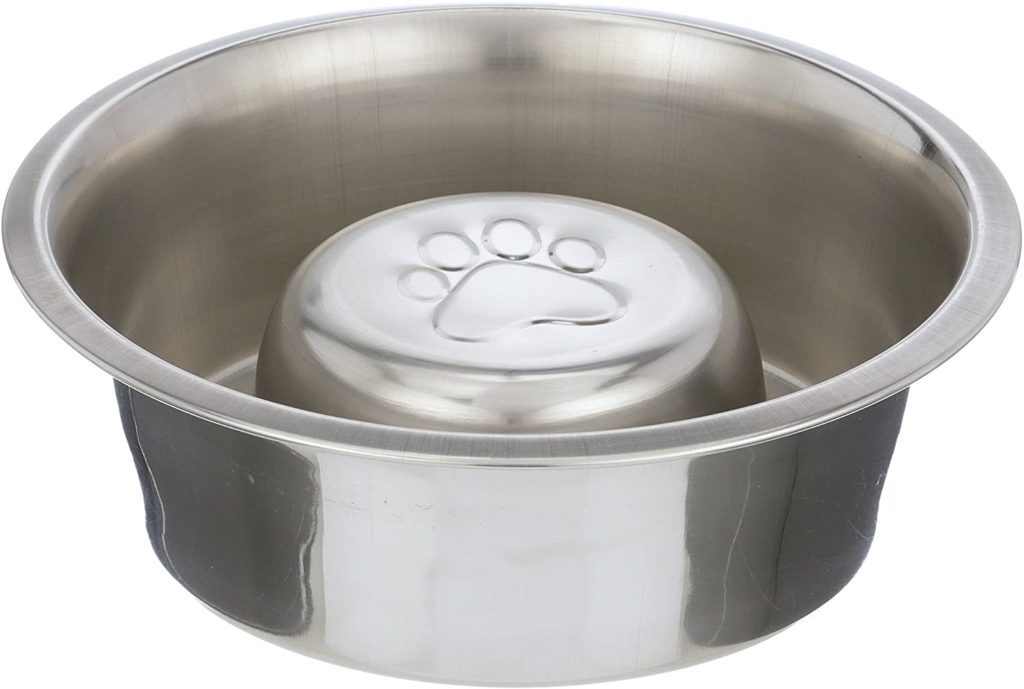
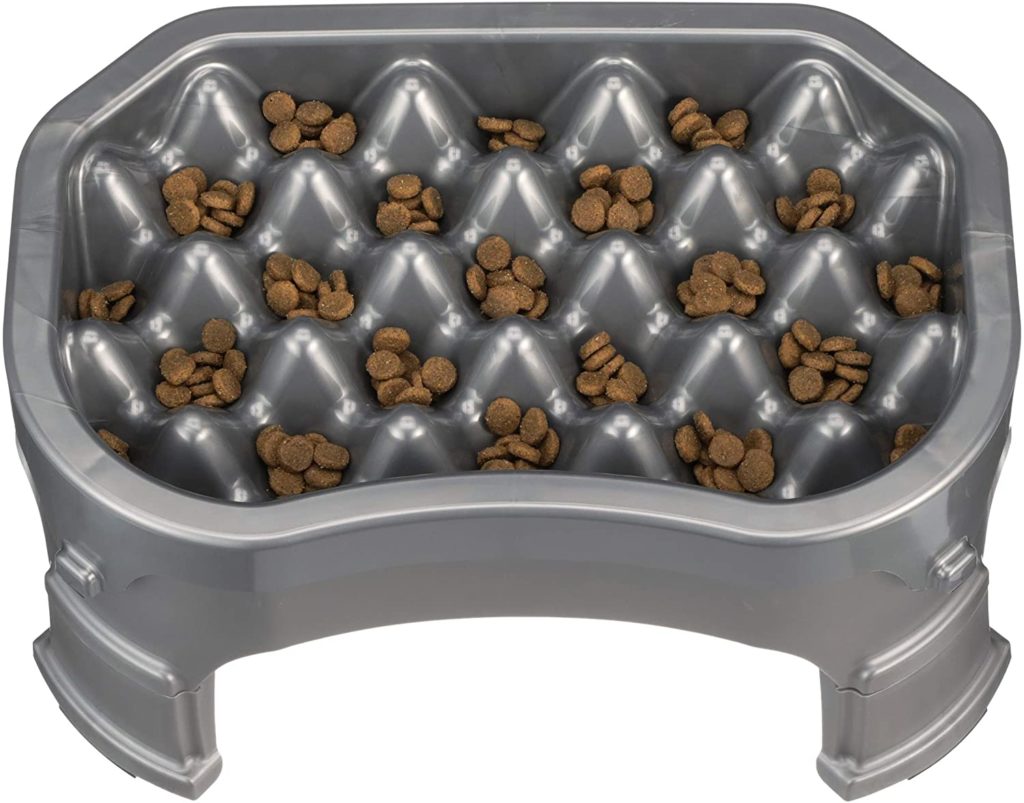
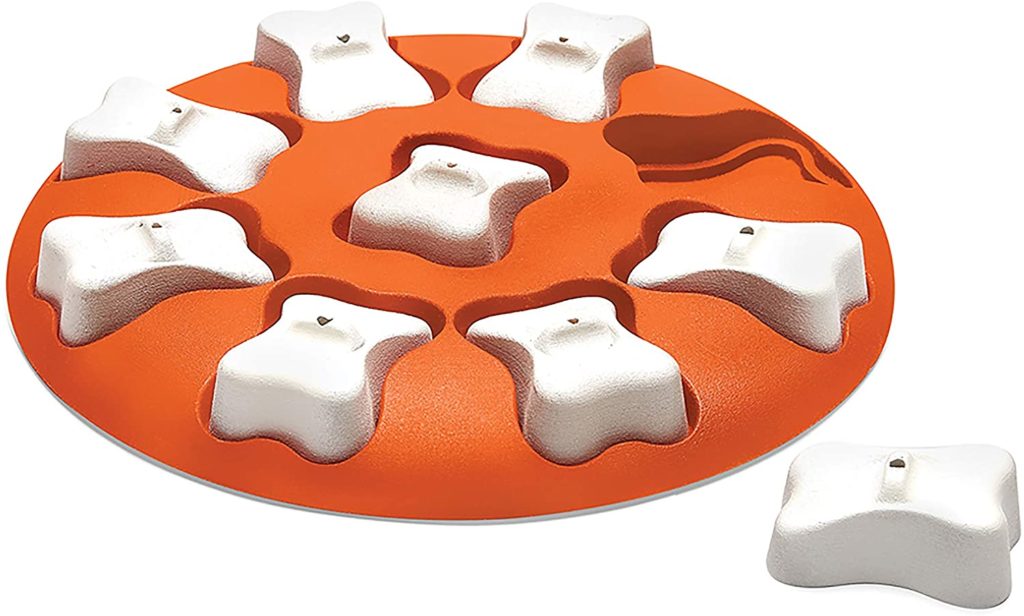
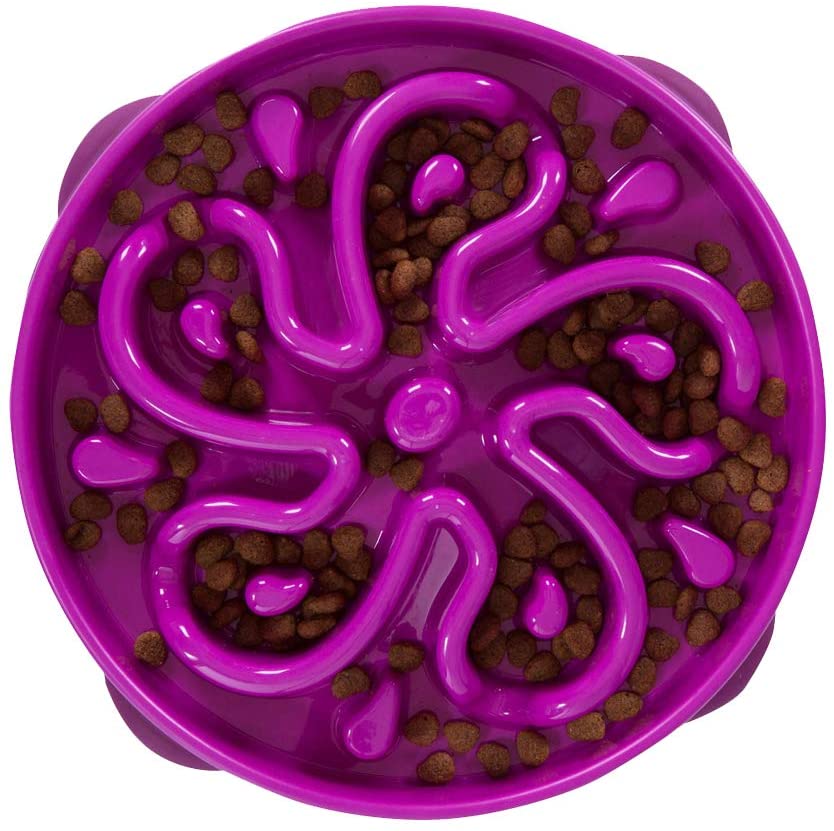
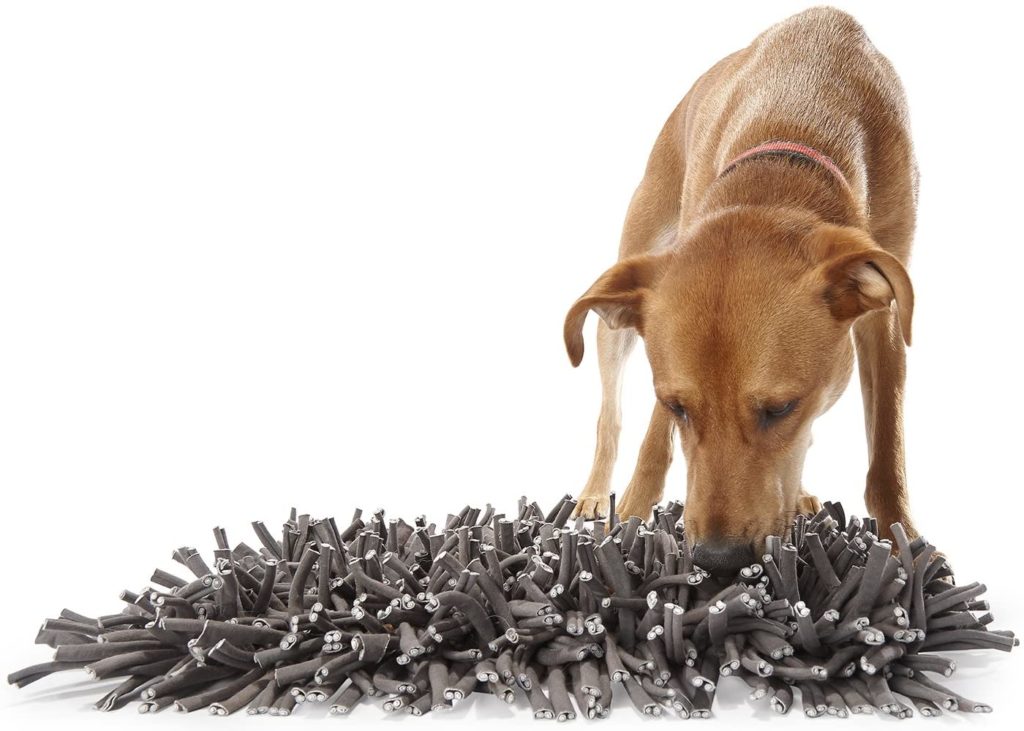
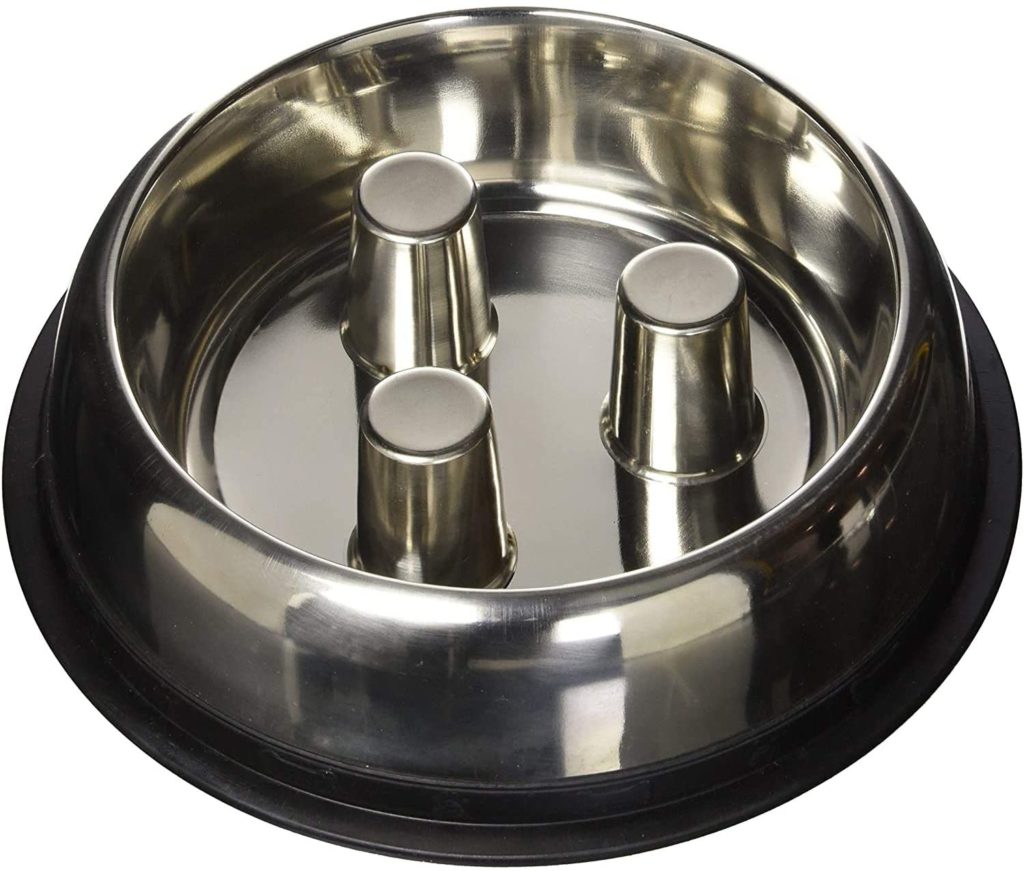

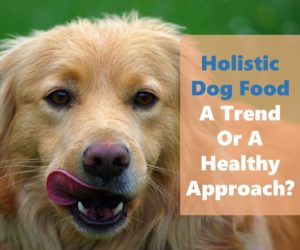
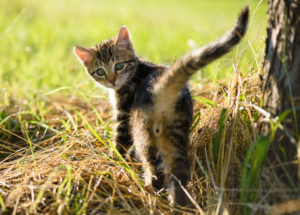

No comment yet, add your voice below!